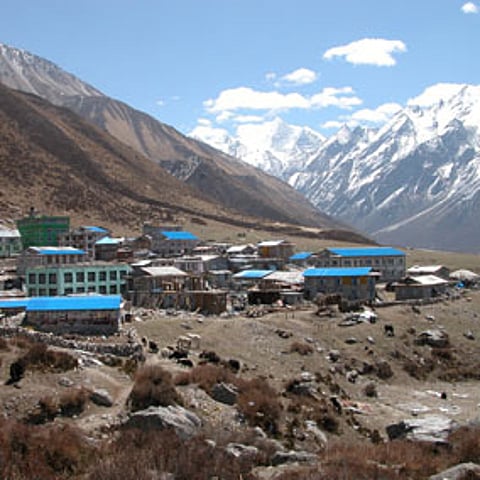Langtang the terrible, Langtang the beautiful: Hope on the trail after Nepal's 2015 earthquake
I'm walking across the biggest landslide I've ever seen, and I know how I'm supposed to be feeling. But I don't feel like I'm stepping over the remains of hundreds of people, animals, and houses, buried deep under tonnes of stone. Instead, I'm experiencing something of an emotional white-out, a sense that I'm traversing a dead, empty space. The mountain responsible for the devastation just stands there, impassively peering over the grey, scoured rock that makes up the northern flank of the valley, as if it had nothing to do with the scene before me, nor the thousands of trees flattened like so many matchsticks on the south side.
Until last spring, this was the penultimate stop on a much-loved trek across Nepal's first Himalayan national park. Langtang Village was a thriving community, a genuine yak-herding and farming settlement that had taken to tourism with aplomb, and on the eve of 25 April, hundreds from up and down the valley had gathered at the monastery for a funerary ghewa for an elder. Many were caught in the monstrous landslide triggered by the 7.8 magnitude earthquake the next morning – if you can characterise a landslide as the cataclysmic brew of snow, ice and rock that buried over 70 houses and created a pressure wave that blasted anything in its path clean across the valley. Over 300 died in the Langtang Valley, and a third of the bodies were never recovered. In the aftermath, I worked on an oral history of the disaster, mostly by interviewing survivors at the Yellow Gomba refugee camp in Kathmandu, but was unable to secure a chopper ride into the valley. Well, here I was now.

